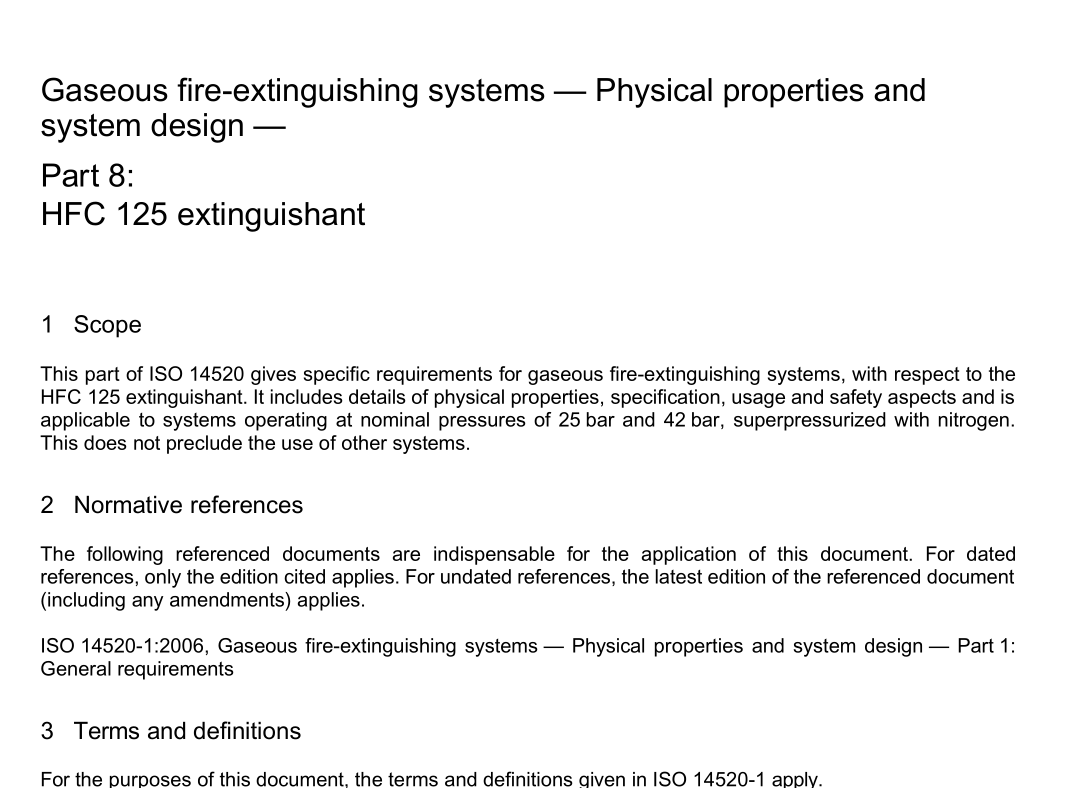BS ISO 14520-8 pdf download

BS ISO 14520-8 pdf download Gaseous fire-extinguishing systems — Physical properties and system design — Part 8: HFC 125 extinguishant
1 Scope
This part of ISO 14520 gives specific requirements for gaseous fire-extinguishing systems, with respect to the HFC 125 extinguishant. It includes details of physical properties, specification, usage and safety aspects and is applicable to systems operating at nominal pressures of 25 bar and 42 bar, superpressurized with nitrogen.
This does not preclude the use of other systems.
2 Normative references
The following referenced documents are indispensable for the application of this document. For dated references, only the edition cited applies. For undated references, the latest edition of the referenced document (including any amendments) applies.
ISO 14520-1:2006, Gaseous fire-extinguishing systems — Physical properties and system design — Part 1: General requirements
3 Terms and definitions
For the purposes of this document, the terms and definitions given in ISO 14520-1 apply.
4 Characteristics and uses
4.1 General
Extinguishant HFC 125 shall comply with the specification according to Table 1.
HFC 125 is a colourless, almost odourless electrically non-conductive gas with a density approximately four times that of air.
The physical properties are given in Table 2.
HFC 125 extinguishes fires mainly by physical means, but also by some chemical means.
4.2 Use of HFC 125 systems
HFC 125 total flooding systems may be used for extinguishing fires of all classes within the limits specified in ISO 14520-1:2006, Clause 4.
The extinguishant requirements per volume of protected space are given in Table 3 for various levels of concentration. These are based on methods given in ISO 14520-1:2006, 7.6.
The extinguishing concentrations and design concentrations for n-heptane and Surface class A hazards are given in Table 4, and those for other fuels in Table 5.









